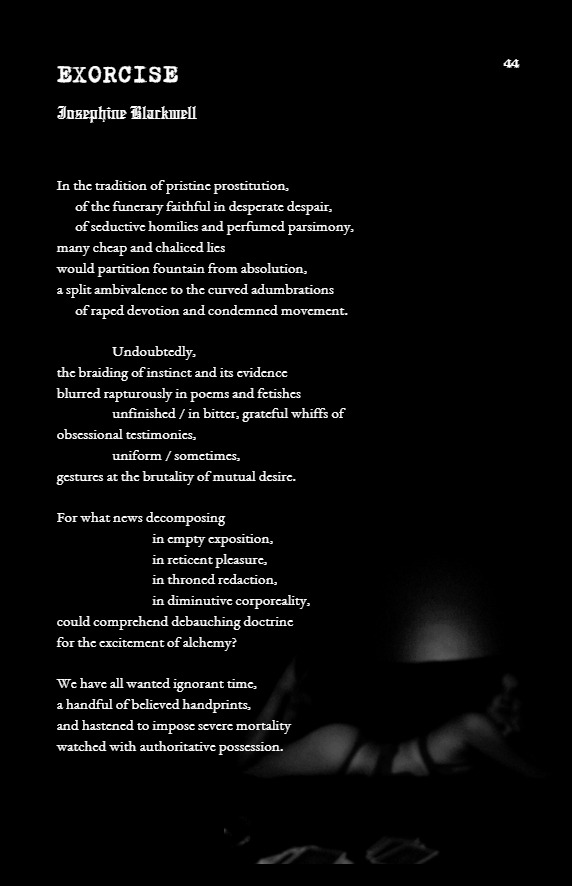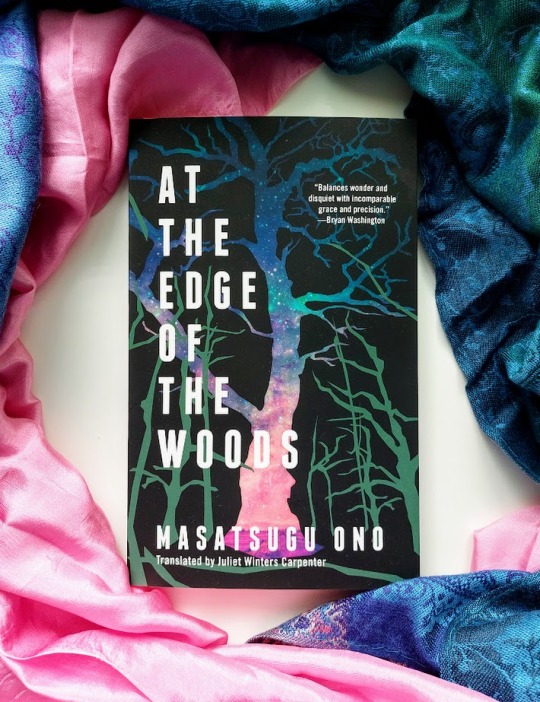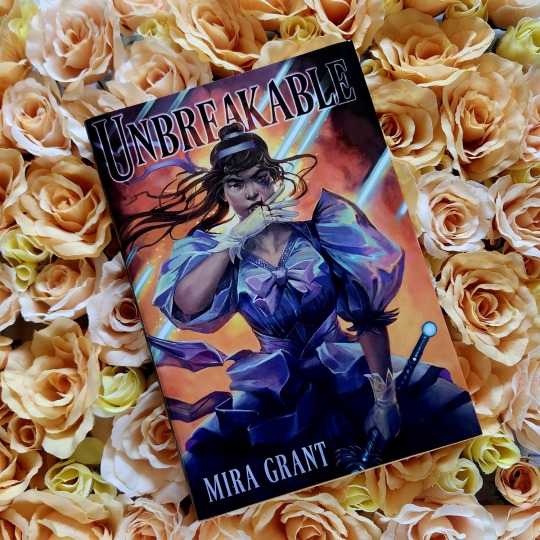#literary press
Explore tagged Tumblr posts
Text
On this thing that we're doing.

So, in 2022, to combat the mental illnesses of our time (capitalism) five of us agreed to start a digital queer romance literary press. And then we founded:
Space Fruit Press!*
And it has continued to be a wonderful experience. Somehow we all still enjoy working together. That is always a miracle and a blessing.
On to the queer sweet & spicy 🌶 stuff—we have a variety of spiced or sweet content for those itching for a good bedtime read.
All Our Books Our Authors
If you ever have any questions or want a more detailed tag or spoiler for any story please email us at [email protected] and we will answer any question you may have.
*the name started as a joke, that we wanted something spacey and something fruity and so we came up with about a million fun combinations but then we just kept referring to it as 'space fruit press' and it stuck.
#Space Fruit Press#SFP#romance books#queer romance#mlm romance#wlw romance#sci fi books#contemporary books#literary press#queer lit#lgbtq books
7 notes
·
View notes
Text
Fortnight really is an excellent album opener as a narrative device. It sets the scene for the tale we are about to uncover, the themes we’re about to explore, the characters we’re about to meet. It’s like an overture, the prologue to the epic we’re about to discover. In fair Verona where we lay our scene indeed etc.
#i listened to it on my commute this morning after not listening to it for awhile and it hit again#like is to my favourite album opener? no that is state of grace always#but it is the perfect opener for TTPD as an intro to the tragic tale (in the literary sense) we’re about to hear#It takes me back to pressing play on the album on April 19 (actually at like 11:45 on April 18!#cause Apple Music uploaded it early lol)#and right from the first lines I was like OH OK WE’RE DOING SOMETHING DIFFERENT#lol I was like ‘is this a concept album?’ and then later on it was like ‘yes the concept is men are fucking trash’#the tortured poets department#fortnight
111 notes
·
View notes
Text

From the Literary Press Group:
“What does it mean for a book to be fully Canadian-made?
Take a closer look when you’re shopping for books: LPG publishers invest in Canadian stories, talent, and production.
Does your choice check all the boxes?
- Canadian Publisher - Canadian Author - Designed & Printed in Canada - Warehoused and Distributed in Canada
Not just great reads—buying fully Canadian-made supports Canadian culture and businesses.” (If you're reading this outside of Canada, it might make less sense. It is of course a way for the Canadian publishing industry to push back against tariffs.)
46 notes
·
View notes
Text
Exciting news, all! One of my projects, a sapphic romantasy novelette called "The Sea" about regret, hope, and memory, is being published this May by Pink Hydra Press!!
On March 1st, Pink Hydra will start a fundraiser to publish three free magazines of queer fiction--all touched by unreality.
If you donate to the fundraiser, you'll get early access to the first five chapters of "The Sea"! You can donate early now:
Link to the fundraiser on ko-fi!!
#sapphic writing#queer#lesbian#sapphic#queer romance#writing#queer fiction#fantasy#romantasy#pink hydra press#literary zine#fundraiser#lesbian fiction#trans writer#queer writer
23 notes
·
View notes
Text

"EXORCISE" by Josephine Blackwell, as published in Junk Literary and Arts Journal. Photograph of me by @adamshallperish.
you can read the full electronic edition of Junk vol. III HERE.
#some musings on artistic ownership / artistic passion / the irony pandemic / cheap vs valuable insight#i forgot to type this out properly but this poem initially ended with an em dash or an ellipsis so consider that#poetry#poets on tumblr#spilled ink#writers on tumblr#josephine blackwell#poems on tumblr#poems and poetry#on writing#spilled poetry#words words words#mine#myself#junk literary and arts journal#junk press#junkie scholar
30 notes
·
View notes
Text

Books of 2024: AT THE EDGE OF THE WOODS by Masatsugu Ono.
#books#books of 2024#book photography#my photography#at the edge of the woods#masatugu ono#i don't know what to say about this one yet!#it's a little press that does exclusively stuff in translation (i found out about them through a subscription box last year!)#it looks Weird and Literary and Vaguely Unsettling#so i'll report back on that once i've read it lol#(it's a matte cover (beloathed) but. that's fine...)
49 notes
·
View notes
Text
am i crazy to think this???:
dnd but with one of your characters (no two fandoms matching) and throwing shit at the wall
#🏨 hello housekeeping? »» ooc.#i think it would be fun. But can i think of a literary way to do this???#maybe...if I wasn't so pressed for time or sad or or or
10 notes
·
View notes
Text
Review: Unbreakable by Mira Grant
Author: Mira Grant (Seanan McGuire)Publisher: Subterranean PressReleased: March 31, 2023Received: Own Book Summary: Unbreakable Starlight was one of many groups of girl warriors tasked with defending the planet. Unfortunately, their name was not quite accurate, as most of the group fell – alongside every other warrior. Only two survived the massacre. Piper and Yuina. Now the government has…

View On WordPress
#Book#Book Review#Books#Fiction#Horror#Literary#Literature#Mira Grant#Review#Science Fiction#Seanan McGuire#Subterranean Press#Superhero#teen superhero#Unbreakable#Unbreakable by Mira Grant
153 notes
·
View notes
Text


Pizza...? Winter Issue 2025
#Secret Restaurant Press#zine#magazine#literary magazine#literature#nonfiction#poetry#essay#new release
9 notes
·
View notes
Text
Lolita counters the commonality and lightness of the world - the neighbor, the school, the united states, the family, the humor, the learned - with barely disguised hatred. elements are described vivaciously, but H.H., being the type of man he is, follows everything up with callous remarks and a general air that seems to be him putting his nose up and going, don't get so offended, i'm only telling you how the world really works. and sometimes, sure, thats how the world works. but other times - and you need to make it a point to distinguish what from what - he's lying right to your face so you don't question why he's trying to pretend that's how the world works.
#if this even makes sense.#like. these elements are often ripe with corruption. (like the US. the US is NOT LIGHT at all. and im not saying it is.#im specifically talking about like the 'newness' of the US compared to more 'old-world' european sentimentalities that crop up.)#but its also good to question where these corruptions come from. are they an intrinsic part? an aberration? or both?#is H.H. pressing against a bruise that was already there? yes. but‚ often‚ he wraps a hand around the wrist he wants to see a bruise on.#it reflects the darkness of the word while also attempting to create more shadows and crevices for him to hide in without guilt.#(specifically thinking about how he points to literary figures/that dude he played chess with at beardsley to try and pass his perversions#as typical throughout history/your day to day life.)#IF THIS EVEN MAKES SENSE!#selk.txt
12 notes
·
View notes
Text
if you were wondering what was the trigger for my "no it's not folklore" post earlier I was editing a press release for work and lecturing some non Celticists about it lmfao
BUT ALSO I was getting mad at Ao3's tag wrangling all over again, having posted a new fic that is going to get wrangled without my consent into being classified as "ancient irish religion and lore" despite extremely not being that in any way, shape or form. sigh.
#one press release at a time i will make people understand the literary context of medieval welsh and irish material#this is it. my mission in life.#néide is a pedant#<- i'm not though i'm just right.
29 notes
·
View notes
Text


this weekend I'll be at CYMERA Festival creator's hall, along with a bunch of freinds! Ready to fight any beasts we come across! I'll have the last of my current batches of t shirts, plus new notebook bundles and loads of books and zines!
Come see me and my pals:
@sticksandsharks
@pppondi
@elljwalker
@quindriepress
14 notes
·
View notes
Text



gonna do an annoying information professional behavior but i find this stuff shocking and imo academics should have to take a little two credit ip course
#the university of chicago press does not write laws#tbf the literary world has it way harder than archives lol
16 notes
·
View notes
Text
my official take on the moon/qibli/winter love triangle is that winterwatcher is a much grander, epic romance, and moonbli is a much more level, sweet-and-simple romance, but ultimately i think it was a better decision to have the latter be the canon romance in a series primarily marketed towards children and teens than fall into the "bad boy" romance trope, and instead romanticize the earnest, genuine, sweet relationship
obviously there's way more nuance to this involving internalized/unconscious bias, and winter doesn't even REALLY fit into the "bad boy" archetype, but purely based on genre conventions, the gruff, rude, brooding, tortured hero VERY often falls into that category, and at the ages of 7-14 most of us were very LIKELY to be romanticizing that archetype, which again is very often treated as interchangeable with the "abusive bad boy" trope, and while i might have a few gripes with the writing of moonbli and i ENJOY winterwatcher a whole lot, i DO appreciate the more gentle, "safe" romance being treated as the ideal, rather than the tense and angst-filled nature of the alternative
#i could talk about this way more but im in the middle of rereading dod so itll have to wait#what i DO have to add is like. something something the ideal romance being the calmer safer one and how - for me at least -#those years of my life were so complicated and difficult and i made this image of romance out to be this massive painful epic tale#of heartbreak and passion and huge declarations of love and everything#but ultimately; imparting the lesson to children that a romantic relationship should be SAFE - it should be your comfortable place#where youre happy and content and feel warm and secure - is MUCH better#than pressing upon them the idea that it should be this epic battle of tension and painful pining and everything#(whether its something simply overlooked in the writing or not; the fact is winter also DIDNT ever apologize to moon for#all the hurtful things he said or did - which isnt to say hes a BAD GUY i love winter so much -#but i think romanticizing those kinds of dynamics - which is tricky but CAN be done - is better saved for works marketed towards#more mature and emotionally intelligent audiences than i think wof might be meant for)#ANYWAY I HAVE LOTS OF THOUGHTS#god im so glad i got back into this series. the literary love of my life#mine#wof#winter#moon#qibli#wings of fire#winterwatcher#moonbli#meta
41 notes
·
View notes
Text
Q&A with John Bidwell
The author of The Declaration in Script and Print discusses Independence Day, the Declaration of Independence as an iconic document, and more.

Why do we celebrate independence on July 4th even though Congress voted for independence on July 2nd?
The date we have chosen for Independence Day depends on a document. By all rights we should be celebrating the day when the United States became an independent nation—July 2, 1776—when the Continental Congress adopted Richard Henry Lee’s resolution “that these United Colonies are, and of right ought to be, free and independent States.” John Adams predicted that July 2nd would be the national anniversary, a day marked with parades, bonfires, bell ringing, gun salutes, and “illuminations” of houses with candles in the windows. Adams was wrong, however, because he did not foresee the emotional impact of the official announcement, a broadside printed two days later with the title In Congress, July 4, 1776. A Declaration by the Representatives of the United States of America, in General Congress Assembled. The date in the title is one reason why July 4th prevailed over July 2nd. But above all Americans cherished the text, an eloquent expression of fundamental rights based on principles of liberty, justice, and equality. Historians have traced its origins, its changing reputation, and its influence at home and abroad. I too have noted how it has been variously interpreted, but mainly I wish to show how it has been visualized, how it appeared in engravings, lithographs, and letterpress broadsides during the nineteenth century. I identify about two hundred prints and broadsides in The Declaration in Script and Print, expensive engravings suitable for framing as well as cheap stereotype keepsakes aimed at the bottom of the market. Starting with an innovative advertising campaign in 1816, I describe the merchandising tactics of artists, printers, and publishers who played on a surge of patriotic sentiment to promote their wares. In the same spirit, Penn State University Press has selected July 4th to be the release date for my book.
What was it that made the manuscript Declaration more inspiring to Americans than the printed version issued on July 4th?
Some delegates were not able to vote for independence on July 4th. A week later they received the necessary authorization, which made it possible for everyone to sign a manuscript version of the Declaration, “fairly engrossed on parchment.” They signed it on August 2, 1776, and reaffirmed the unity of the United States by changing the title to: “In Congress, July 4, 1776. The Unanimous Declaration of the Thirteen United States of America.” The text is more or less the same as the broadside edition, but written out by hand it seems more tangible, personal, and distinctive. Beneath it are fifty-six autographs of Founding Fathers, each an act of patriotism representing courage, conviction, and a shared commitment to a righteous cause. Awestruck Americans could pick out the names of Adams, Jefferson, Franklin, and other heroes of the Revolution. While giving the first edition its due, they have looked at the August 2nd manuscript as a more meaningful and evocative expression of their history and ideals. Printmakers catered to public demand by publishing reproductions of the manuscript although often only the signatures were reproduced in facsimile. Some believed that the manuscript had been signed on July 4th, wishful thinking all the better to convey the drama of the moment.
How and when did the Declaration become an iconic document?
In 1816 the Philadelphia newspaper publisher John Binns issued subscription proposals for an engraving of the Declaration. He was the first to tell Americans about the iconic value of that document, for which he designed a pictorial scheme that would define a new genre of patriotic prints—the signatures in facsimile, the text adorned with portraits, allegorical vignettes, and a massive cordon of state seals. Other printmakers adapted his designs, some imitated them in pirated editions, and two opportunists reprinted the original edition on the occasion of the Centennial. While Binns’s print was in press, an itinerant writing master, Benjamin Owen Tyler, produced a calligraphic version with the signatures in facsimile but without illustrations. That too inspired a series of imitations and adaptations. Binns accused Tyler of plagiarizing his prospectus, and Tyler fought back by impugning his opponent’s patriotism in a newspaper war that publicized both of these trend-setting prints. More than seventy per cent of the Declaration prints and broadsides published during the nineteenth century were derived in whole or part, directly or indirectly, from these archetypal images.
Why would Americans prefer facsimiles of the Declaration to the original manuscript?
Perhaps it wasn’t so much a matter of preference as practicality. Americans have been able to view the original in Washington where it has been displayed at various times in the Patent Office, the State Department, the Library of Congress, and the National Archives. Huge crowds came to see it in Independence Hall during the Centennial. Many were disappointed to discover that it was in poor condition, the text illegible in places and the signatures almost entirely effaced. Printmakers helped to popularize the Declaration, but their invasive replicating techniques are partly to blame for ruining it. Secretary of State John Quincy Adams realized that the manuscript was in danger and commissioned a scrupulously accurate reproduction of the text and signatures, printed in a limited edition dated “July 4th. 1823.” Adams and his successors strictly controlled the distribution of the official facsimile until the end of the century. Meanwhile the condition of the manuscript went from bad to worse. In 1894 complaints about its continuing deterioration prompted government officials to take it down and lock it in a safe, where they kept it out of sight for thirty years. During that time the State Department facsimile was the only option for those who wanted to visualize the founding document. To this day we rely on it to show what the manuscript must have looked like when it was signed by the Founding Fathers: that is what we see in souvenirs, textbook illustrations, and the New York Times every year on July 4th, an iconic image of an essential text.
The Declaration in Script and Print: A Visual History of America’s Founding Document is now available from Penn State University Press. Learn more and order the book here: https://www.psupress.org/books/titles/978-0-271-09730-5.html. Take 30% off with discount code NR24.
#The Declaration of Independence#Independence Day#Independence#US History#History#19th Century#Literary Studies#American History#America#American#Books#Print#Script#PSU Press
3 notes
·
View notes
Text
#Blogtour Mongrel by Hanako Footman
It’s a pleasure to take part in the Blogtour Mongrel by Hanako Footman, which is a 2024 debut novel you don’t want to miss. About the Author Hanako Footman is a British-Japanese actor and author living in London. Mongrel is her debut novel. Follow @hanakofootman on Instagram About the book Mei loses her Japanese mother at age six. Growing up in suburban Surrey, she yearns to fit in,…

View On WordPress
3 notes
·
View notes